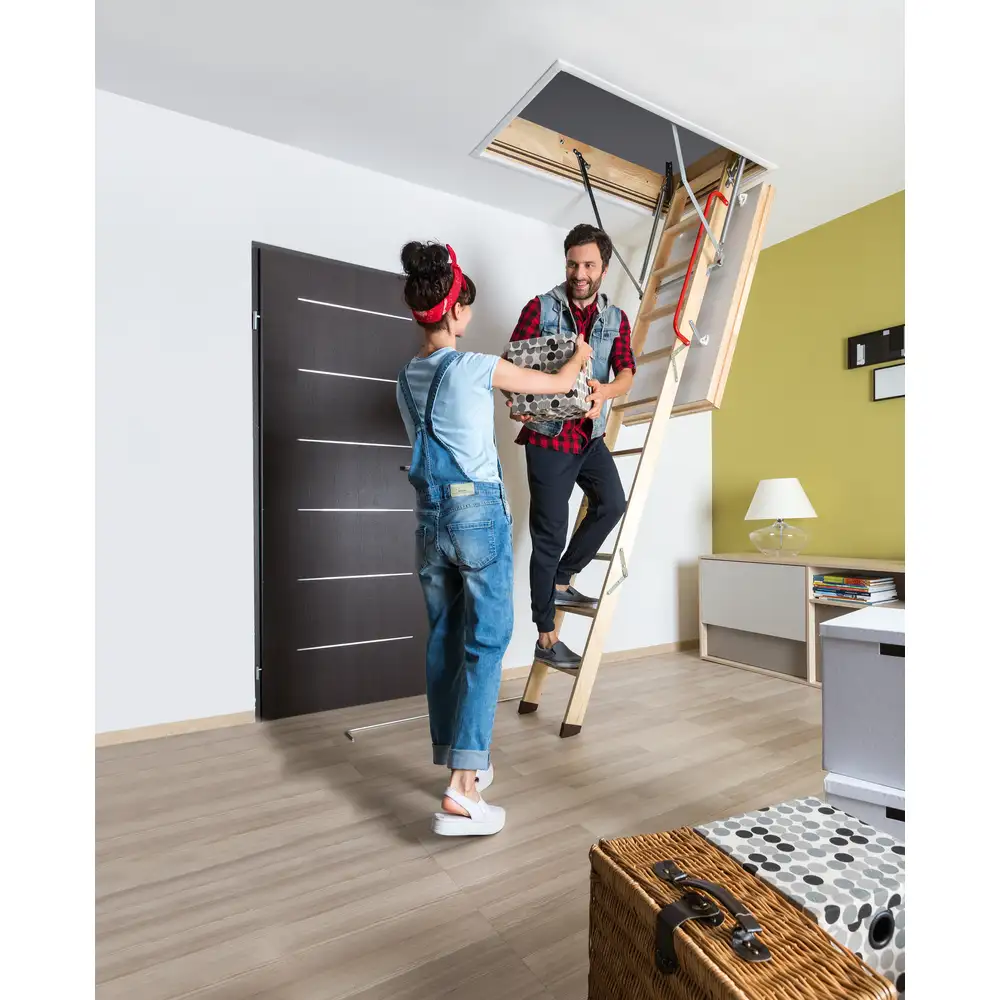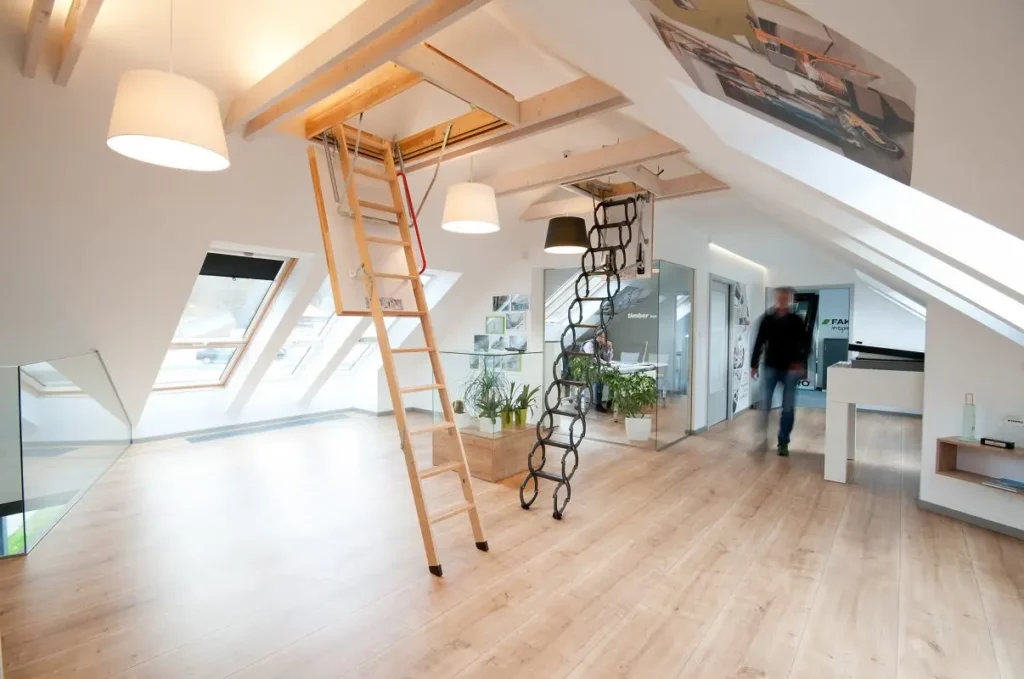Attic ladders are a convenient addition to many homes, providing easy access to valuable storage space. With an attic ladder, homeowners can effortlessly stow away seasonal items, decorations, and other seldom-used belongings.
Attic ladders save time and reduce the need for bulky, freestanding ladders, making them a popular choice in homes where attic access is frequently required. However, while attic ladders offer great benefits, they can pose significant risks, especially in households with young children.
For families, childproofing an attic ladder is essential to prevent accidental injuries. Children are naturally curious and may find an attic ladder irresistible. The risks associated with these ladders include falls, tripping, and even entrapment, especially if the ladder is left accessible.
Given these dangers, parents must take proactive steps to safeguard their attic ladders and ensure they do not pose a risk to young family members. Childproofing provides peace of mind and makes the home a safer place for children to explore and play.
Assessing the Risks
When childproofing an attic ladder, it’s essential to start by understanding the specific risks it can pose. Attic ladders often remain out of sight but are easily accessible when unfolded, creating an inviting opportunity for children to climb.
A ladder that isn’t securely closed may be easily pulled down by a child, increasing the risk of accidents. Further, attic ladders are often heavy, and if not properly secured, they can drop unexpectedly, potentially injuring a child standing below.
Several factors influence the level of risk posed by an attic ladder and the best approach to childproofing it. The type of ladder, for instance, impacts safety; some ladders are foldable, while others are telescoping or even permanently fixed. The frequency of use is also crucial, as ladders frequently accessed for storage may require more robust childproofing.
The layout of the room and its accessibility to children also play a role, as ladders located in bedrooms or playrooms may need additional safety measures. Evaluating these factors in the context of individual homes helps parents identify the best childproofing solutions suited to their family’s lifestyle.
Physical Barriers to Prevent Access
One of the most effective ways to childproof an attic ladder is to prevent children from getting close to it in the first place. Installing a safety gate at the base of the ladder is a straightforward solution that creates a physical barrier, reducing the likelihood of accidental access.
When selecting a safety gate, choose one that is sturdy and securely mounts to the walls around the ladder. Gates with child-proof latches are ideal, as they prevent young children from opening them independently. Look for gates specifically designed for stairways, as they are typically built to withstand impact and secure tightly.
Additionally, placing a lock on the attic door or hatch adds another layer of security. Various types of locks are available, including keyed locks and combination locks, both of which are effective at keeping curious children from accessing the ladder.
Installing a lock is usually straightforward: first, measure the door or hatch, then secure the lock according to the manufacturer’s instructions. This step ensures that the attic remains off-limits to children, even if they manage to reach the hatch.
Safety Mechanisms for the Ladder
Beyond physical barriers, adding safety mechanisms to the ladder itself can significantly reduce the risk of injury. One effective option is to improve the ladder’s traction by adding non-slip steps.
Non-slip surfaces can prevent both children and adults from slipping when using the ladder, particularly if there’s a risk of moisture or dust accumulation. Adhesive tread strips are easy to apply and provide additional grip, while non-slip paint is another option that offers durability.
For additional security, consider installing an automatic closing mechanism on the attic ladder. This mechanism allows the ladder to close on its own after use, preventing it from being left open accidentally.
An automatic closing mechanism can be a more costly addition but is well worth the investment in a home with young children. Installing this feature typically requires professional assistance to ensure it is securely fitted, but it can dramatically increase the ladder’s safety by keeping it out of reach when not in use.

Child Safety Tips When Using the Attic Ladder
Supervision is key to maintaining attic ladder safety. Children should never be left alone around the ladder, even if it’s childproofed, as there’s always a risk that they may find a way to access it.
When using the ladder with children in the home, ensure someone is nearby to keep an eye on them or, ideally, secure the ladder area before climbing up. By taking these precautions, parents can ensure that children remain safely away from the ladder.
Setting clear safety rules for children regarding the attic ladder is equally important. Basic rules such as “no climbing without an adult” and “no playing near the ladder” help children understand the boundaries.
Parents can use simple, age-appropriate language to explain why these rules are essential and reinforce them regularly. Teaching children about the risks calmly and clearly encourages them to respect the ladder as a “no-play zone.”
Additional Precautions for Enhanced Safety
Keeping ladders and ladder-related tools out of reach is another essential step in childproofing. The ladder pole, attic door handle, or any other tools used to access or open the ladder should be stored securely. Ideally, these items should be placed in a high cupboard or a locked drawer, away from children’s reach and sight, to prevent them from attempting to open the attic door.
An attic ladder cover can further enhance safety by concealing the ladder’s rungs when it’s not in use. These covers prevent children from grabbing or climbing the ladder, providing an added barrier for curious little ones. Attic ladder covers are easy to install and come in a variety of materials to suit different needs and budgets.
Regular maintenance of the attic ladder is essential to ensure it remains safe for use. A simple maintenance checklist might include checking screws and bolts for tightness, ensuring the hinges are secure, and verifying that the ladder operates smoothly.
Loose screws or worn steps can compromise the ladder’s safety, so make repairs promptly to prevent accidents. Regular inspections allow parents to identify potential issues before they become hazards.
Tips for Choosing a Child-Safe Attic Ladder
If you’re considering installing a new attic ladder, selecting one with built-in safety features is a smart choice. Some ladders come with self-locking mechanisms or slow-release steps that prevent sudden drops and minimise the risk of injury. These models may be more expensive but offer a safer alternative, particularly in homes with young children.
When choosing a ladder, it’s also important to consider its size and weight. Opt for a ladder that is manageable in size and not overly heavy, as a lighter ladder is easier to control. By selecting an appropriate ladder, homeowners can make the attic safer for both adults and children.
Conclusion
Childproofing an attic ladder is essential for any family home with young children. By combining physical barriers, safety mechanisms, clear safety rules, and regular maintenance, parents can create a safer environment that prevents accidental access to the attic ladder. From installing a safety gate to selecting a child-safe ladder, these proactive steps reduce risks and provide peace of mind.
Regularly reassessing attic ladder safety as children grow ensures that safety measures remain effective and up-to-date. By taking these precautions, parents can protect their children from the dangers posed by attic ladders, making the home a safer and more enjoyable place for everyone.




